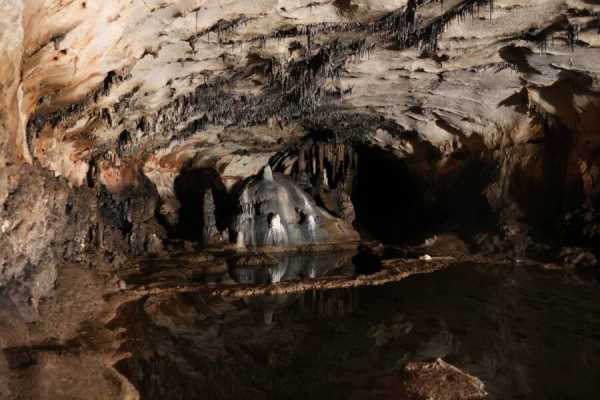Researchers exploring Spain’s Cova de les Dones discovered a Roman coin and 15 inscriptions in its interior chamber, revealing that the cave served as a Roman sanctuary in the first century C.E.

A. Ruiz-Redondo, V. Barciela and X. MartorellResearchers shine a light on where they discovered the Roman coin.
Researchers from the University of Alicante and the University of Zaragoza recently explored the Cova de les Dones in Spain’s Valencia region, initially seeking to expand upon previous studies of the cave’s interior. However, their mission took an unexpected turn when they uncovered an artifact from the Roman era.
Tucked away in one of the cave’s interior chambers, roughly 650 feet from the entrance, a Roman coin was found lodged between a fissure and a stalactite on the ceiling.
The coin, rusty and green with age, dates back to Emperor Claudius’ reign — nearly 2,000 years ago.

A. Ruiz-Redondo, V. Barciela and X. MartorellThe faded Roman inscriptions discovered on the cave walls.
Researchers are now working to translate the inscriptions and continue their exploration of the cave, only 20 percent of which has been surveyed as of now, searching for additional artifacts that may shed further light on its Roman history.
As the press researchers explained: “The Roman inscriptions are just beginning to be analyzed and there are still areas of the cave that have not been explored in detail, so the Cova may still be a source of surprises for archaeologists in the coming years.”
After reading about this Roman sanctuary, discover 11 of the most astonishing underground cities from around the world. Then, dive deeper into Roman history by exploring nine of the most unhinged and cruel Roman emperors in history.
Sourse: www.allthatsinteresting.com





